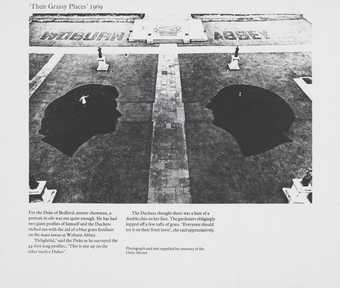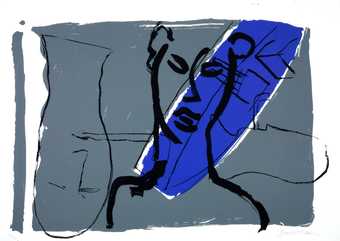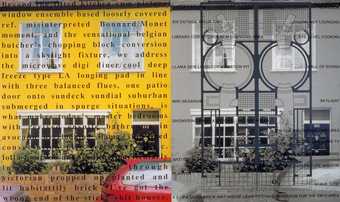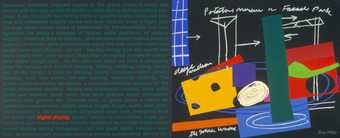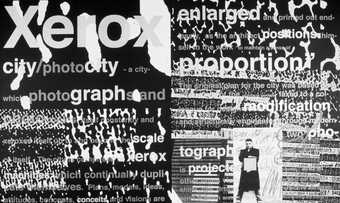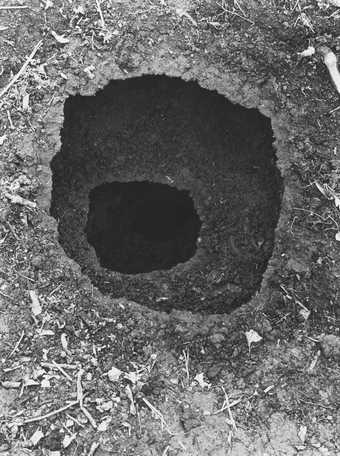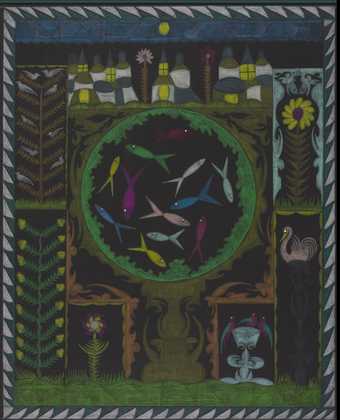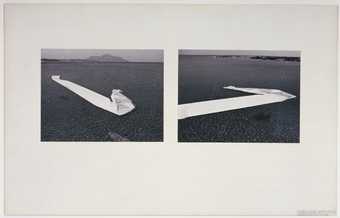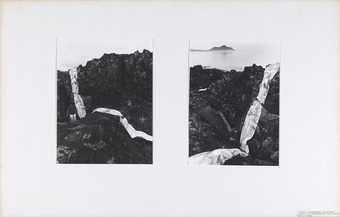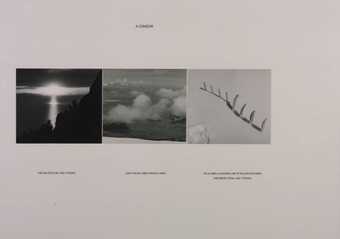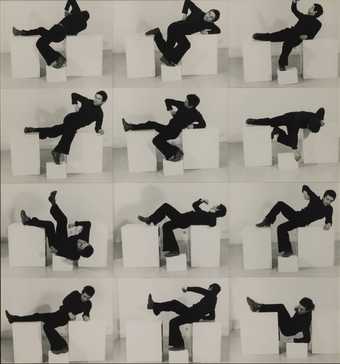
Not on display
- Artist
- Bruce McLean born 1944
- Medium
- 6 photographs, gelatin silver prints on paper, typewritten caption on card
- Dimensions
- Unconfirmed: 505 × 787 mm
- Collection
- Tate
- Acquisition
- Purchased 1973
- Reference
- T01740
Display caption
Over a year McLean made these six sculptures from natural materials. He returned them to the environment, so these photographs are the only record of their existence. The sculptures demonstrate McLean’s interest in time and its passing. With Floataway Sculpture, the water currents break up the sculpture, transforming the piece into an event. In his continuing attempts to resist the commodification of the art object, McLean later moved to performance and Body art.
Gallery label, May 2007
Does this text contain inaccurate information or language that you feel we should improve or change? We would like to hear from you.
Catalogue entry
Bruce McLean b.1944
T01740 Six Sculptures 1967–68
Not inscribed.
Six black and white photographs, with captions typed on them, laid on white card, 19¿x 31 (50.5 x 79).
Purchased from the artist through the Situation Gallery (Grant-in-Aid) 1973.
The photographs are disposed in two horizontal rows of three. All the photographs are between 7¿ and 7¿ in. high and between 9 and 9½in. wide. The typed captions read:
Upper left: ‘Floataway sculpture sawdust and wood shavings 1967’
Upper centre: ‘Mud sculpture 1967 Beverley Brook Tidal Bruce McLean’
Upper right: ‘Vertical ice piece Barnes Pond 1968’
Lower left: ‘Mud sculpture using board and tidal stream 1967 Bruce McLean’
Lower centre: ‘Ice on grass 1968 sunny day. Bruce McLean’
Lower right: ‘3 wooden blocks on concrete plinth 1968’
All the sculptures recorded in these photographs were made near McLean’s home in Barnes, south-west London. All were transitory in physical form. The artist told the compiler (May 1974) that the two very small wooden blocks were made by himself and after having been placed and photographed were left by him in their location in Stanton Road, Barnes (on a pre-existing strip of concrete). All six works were a direct response to the situation in which he found himself. Aware of the range and quantity of sculpture being made in more permanent forms he felt it was foolish to make large sculptures and asserted in these works that neither permanence nor the materials chosen for a work could in themselves determine the degree of a work’s excellence.
Published in The Tate Gallery Report 1972–1974, London 1975.
Explore
- architecture(30,960)
-
- bridges and viaducts(4,123)
-
- bridge(3,989)
- townscapes / man-made features(21,603)
-
- street(1,623)
- formal qualities(12,454)
-
- fragility(50)
- photographic(4,673)
- spontaneity(112)
- ephemerality(51)
- fine arts and music(3,982)
-
- sculpture(693)
- UK countries and regions(24,355)
-
- England(19,202)
You might like
-
Bruce McLean Their Grassy Places
1969 -
Bruce McLean Large Warhead
1984 -
Bruce McLean An Ideal Home
1998 -
Bruce McLean Facade Park
1998 -
Bruce McLean Xerox City
1998 -
Andy Goldsworthy Holes / Middleton Woods, Yorkshire / 1 February 1981
1981 -
Scottie Wilson The Tree of Life
1958–9 -
Scottie Wilson The Bowl of Life
1958–9 -
Bruce McLean 150ft Seaskape, Largiebeg
1969 -
Bruce McLean 2 Rock and Shoreskapes, Largiebeg
1969 -
Keith Arnatt Self-Burial (Television Interference Project)
1969 -
Hamish Fulton A Condor
1972 -
Bruce McLean Pose Work for Plinths I
1971 -
Bruce McLean Pose Work for Plinths 3
1971 -
Elsa Stansfield, Madelon Hooykaas Journeys
1976

